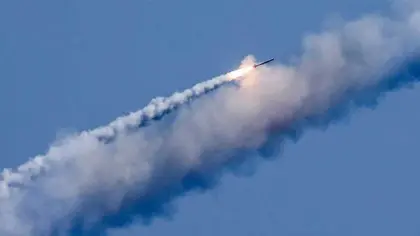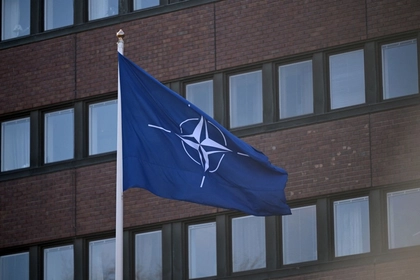Satellite imagery has allegedly indicated Russia may be gearing up for tests of an intercontinental cruise missile powered by a nuclear reactor known as SSC-X-9 Burevestnik (NATO: Skyfall) or that such tests may have already taken place.
The New York Times, citing satellite images from Planet Labs, reported that on the morning of Sept. 20, equipment was spotted on the launch pad situated in the remote Novaya Zemlya archipelago. Among the equipment was a truck with a trailer, reportedly matching the dimensions of the missile itself.
JOIN US ON TELEGRAM
Follow our coverage of the war on the @Kyivpost_official.
Also, the shelter usually hiding the launch pad was moved aside. By noon, the trailer had vanished, and the shelter was back in place.
Further satellite images from Sept. 28 showed renewed activity at the launch pad, with a truck once again parked near the site and the shelter pushed aside.
Adding to the intrigue, Russian authorities issued a notice on Aug. 31, advising pilots to avoid a “temporarily dangerous zone” over a portion of the Barents Sea and several kilometers from the Pankovo launch pad.
A similar notice was issued prior to the test of the Burevestnik missile in 2019, according to The New York Times.
Norwegian environmental organization Bellona, which analyzed satellite images, reported that in early August, two Rosatom aircraft, believed to collect data on missile launches, were spotted at the Rogachevo airbase, approximately 160 kilometers from the launch pad.

Russia, China FMs Meet as ASEAN Talks Get Underway in Laos
The secrecy surrounding the project, coupled with the remote location of the launch pad, has made it challenging to ascertain whether tests are imminent or have already occurred.
The Burevestnik is a highly advanced intercontinental cruise missile with an unlimited range due to its nuclear power plant. Russian President Vladimir Putin first announced the development of such missiles in March 2018.
In a recent statement at the end of September 2023, Mikhail Kovalchuk, the president of the Kurchatov Institute National Research Center and a close associate of Vladimir Putin, suggested that Russia should conduct nuclear weapons tests on Novaya Zemlya in response to what he described as the “aggressive actions of the West.”
The new technology Russia is testing so secretly is its ability to sustain in atmosphere flight using a nuclear reactor, something very experimental and potentially dangerous given that it is launched with a rocket motor.
Apparently the Burevestnik intercontinental cruise missile can use either a conventional or nuclear warhead, so this is not a nuclear weapons test. How this might be covered by international agreements is an unanswered question. But whether there is a warhead or not, there are inherent dangers in these tests that are unprecedented.
Rocket motors, especially experimental ones, can fail and explode or may go off planned trajectory and force an induced detonation. While this could be potentially dangerous in itself, a missile with a nuclear reactor on board would spread radioactive fissile material from the debris across a large region of the land and sea.
Even without explosions of rocket motors, another unanswered question concerns radioactive materials at the missiles impact point.
You can also highlight the text and press Ctrl + Enter






